Vinca en acuarela//Vinca en watercolor
El arte tiene muchas definiciones para mí es un proceso para recrear la realidad, tratar de imitarla, darle una nueva forma, y preservarla en el tiempo.
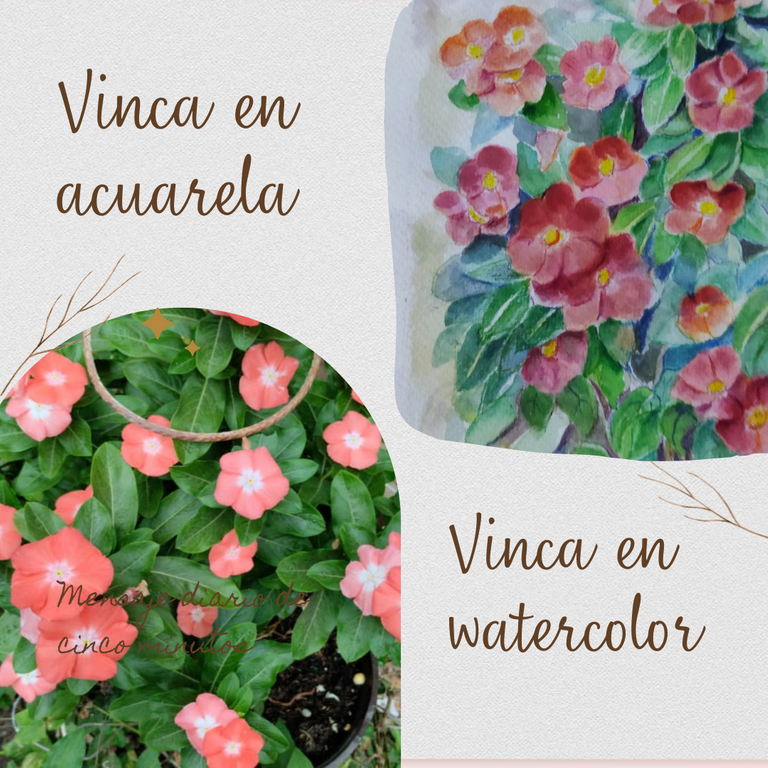
Dicen que la belleza está en el ojo del que ve y eso también es cierto, desde mi punto de vista, admirar la naturaleza y apreciar cada color, cada detalle es algo que me gusta; por eso desde que me interesé por la pintura he tratado de copiar hojas, flores y paisajes como una forma de recreación.
Me gusta mucho la acuarela por la precisión que debe tenerse al ir colocando las capas y porque el agua con el pigmento establecen una relación que no termina, la mancha sigue hablando aun pasado el tiempo.
Sigo siendo una aprendiz, aún sigo buscando en esta técnica para mejorar un poco cada día. En esta oportunidad quiero hacer el tutorial de cómo elaboré este cuadro de Vincas o Buenas Tardes a partir de la siguiente imagen.
Materiales:
. Pinceles suaves para acuarela
. Pintura de acuarela
. Creyones acuarelables
. Lápiz de grafito para hacer el boceto
. Papel base 300 especial para acuarela
. Agua destilada
. Paleta para mezclar los colores
. Un pañito o papel higiénico
. Uno o dos recipientes para mojar los
pinceles.
. Tirro
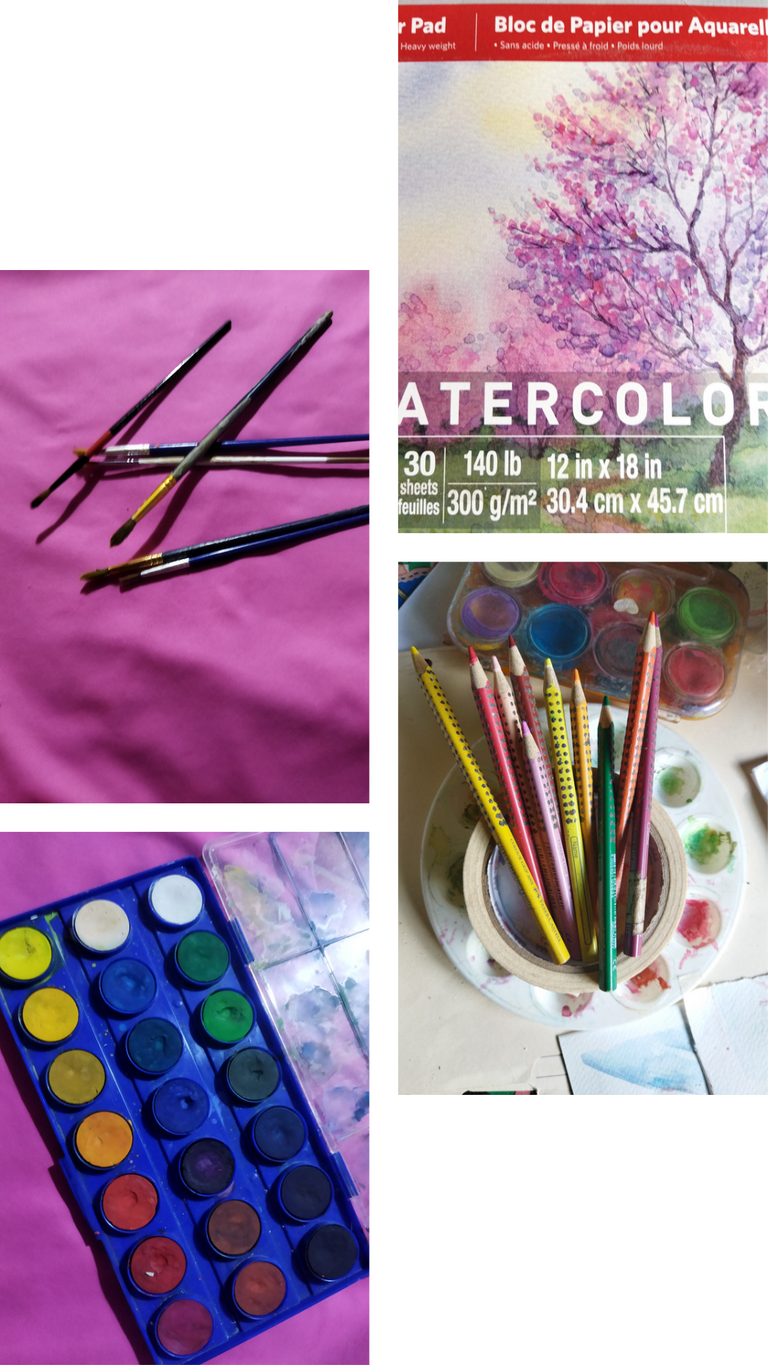
Pasos
1
Lo primero es colocar tirro en las orillas del papel para dejar un margen blanco de aproximadamente uno o uno y medio centímetros.
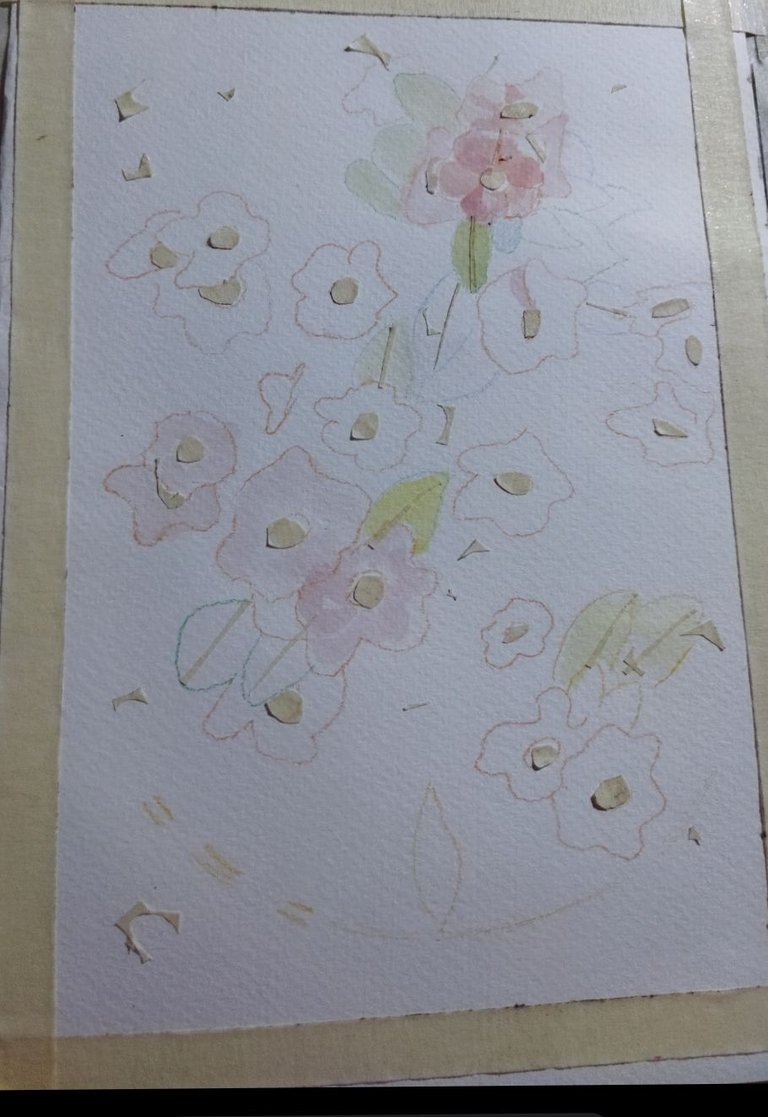
2
Seguidamente se procede a hacer el dibujo, con lápiz de grafito, en el papel. En la pintura lo más importante es el dibujo que debe quedar lo más exacto posible a nuestra imagen seleccionada, en este caso era una fotografía de una planta llamada Vinca, también se le llama Buenas Tardes.
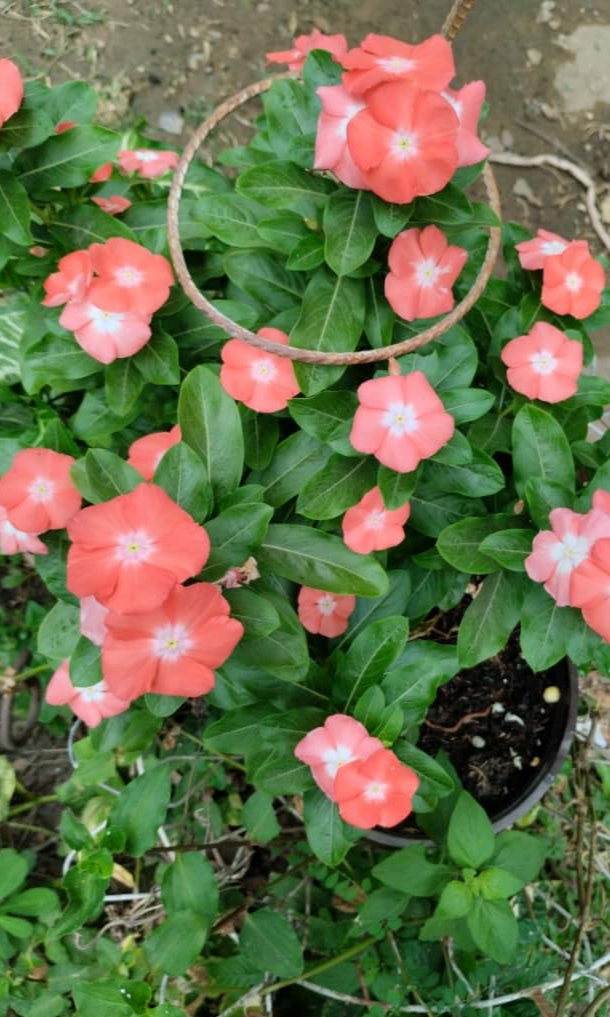
3
Luego recorté formas pequeñas de tirro para colocar en algunos lugares donde quería dejar algunas luces y en el centro de cada flor. También existen unos productos que permiten hacer eso, para proteger los blancos, que se forman con el mismo papel, o sea, no se utiliza el color blanco sino que la ausencia de pintura en el papel deja visto el blanco.
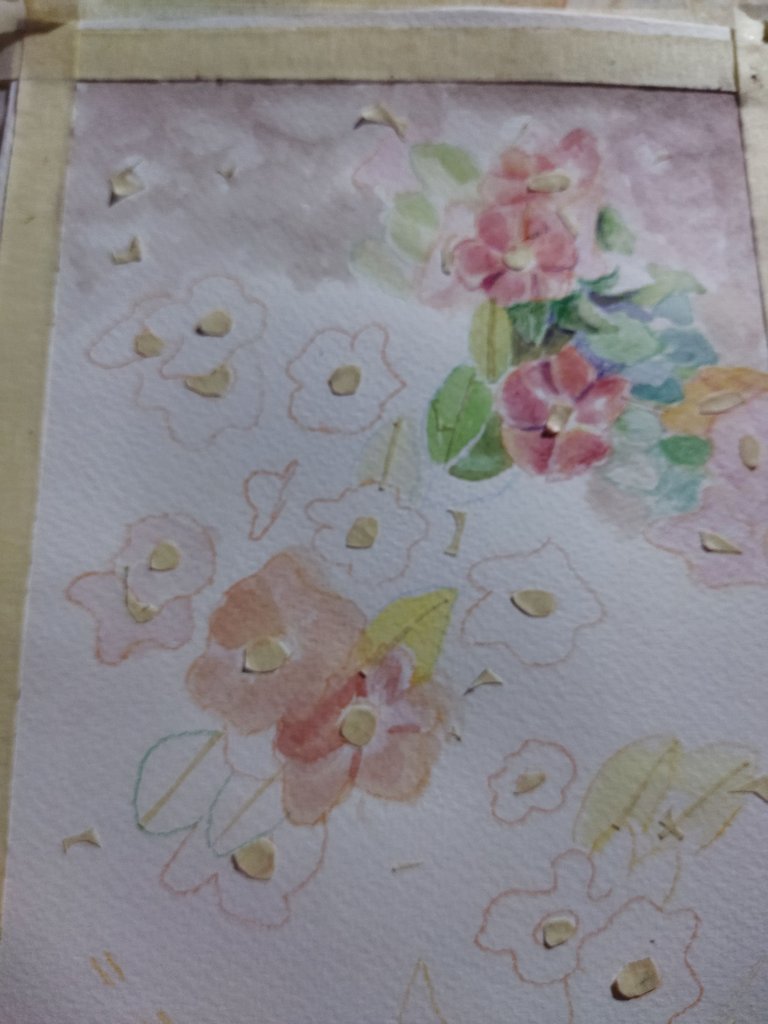
Es conveniente ir colocando los colores más tenues primero, capa tras capa. Si colocamos el color fuerte la primera vez, arruinamos el trabajo.
Hacer este tipo de pintura da mucho relax, por lo que tener todo a la mano es necesario. Se deben limpiar muy bien los pinceles y secarlos con cuidado, antes de usar un nuevo color para que no se nos manche el diseño.
4
Una vez seca una capa vamos colocando la otra. En este dibujo trabajé mojado sobre seco. También se puede hacer mojado sobre mojado y las pinturas se van integrando y dan un efecto muy interesante. Pero yo preferí, en esta oportunidad, dejar secar primero.
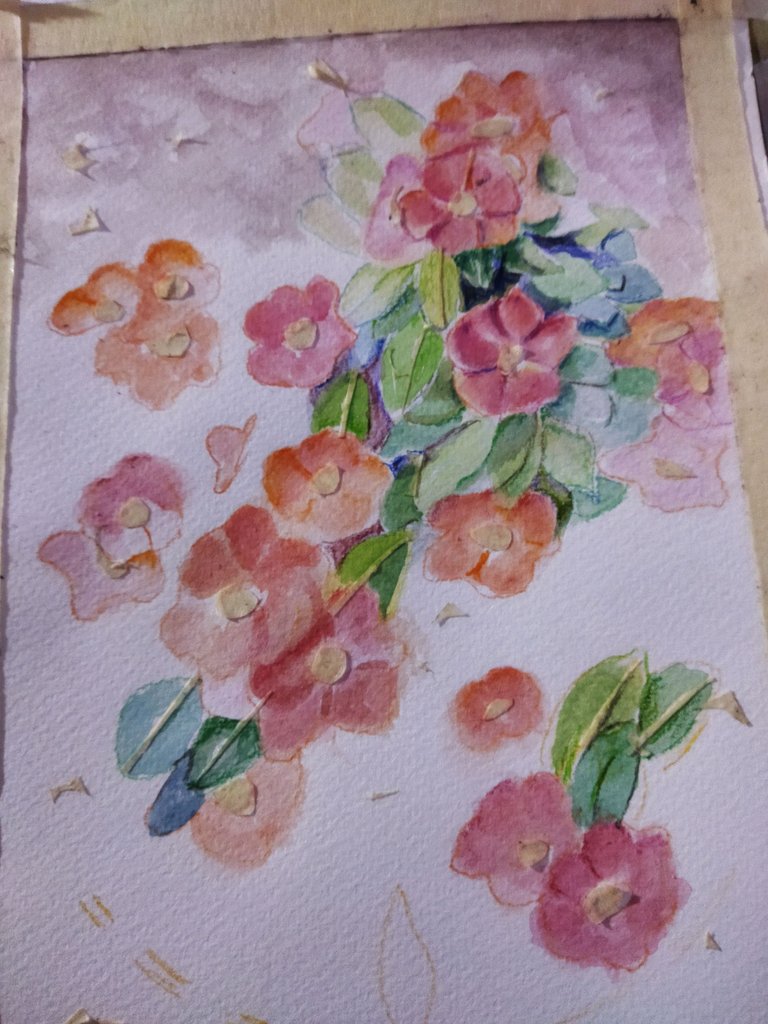
5
En la pintura el color azul nos ayuda a mostrar lo que está detrás, y a crear contraste por eso algunas hojas presentan esos colores.
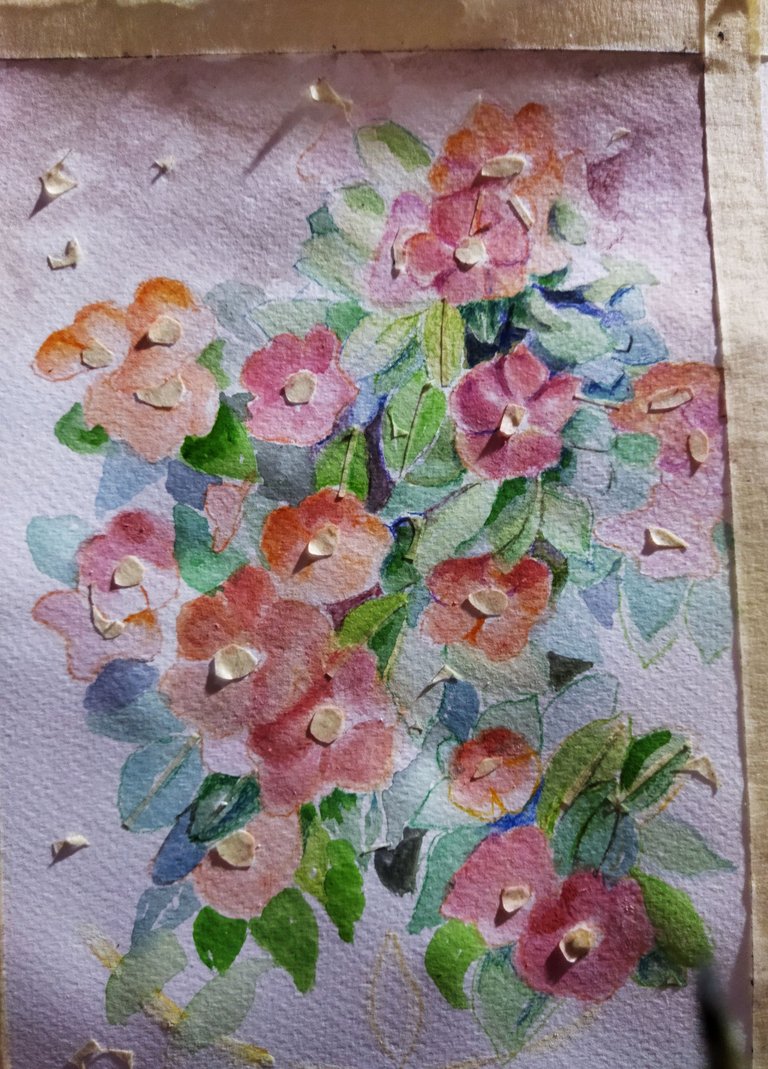
Al final, con colores acuarelables, con la punta muy fina, fui haciendo los detalles, o sea, las nervaduras de las hojas, no a todas, para permitir que algunas se vean más distantes.
6
Y este es el resultado final, luego de quitar el tirro de las orillas y los trozos dispersos en el dibujo.
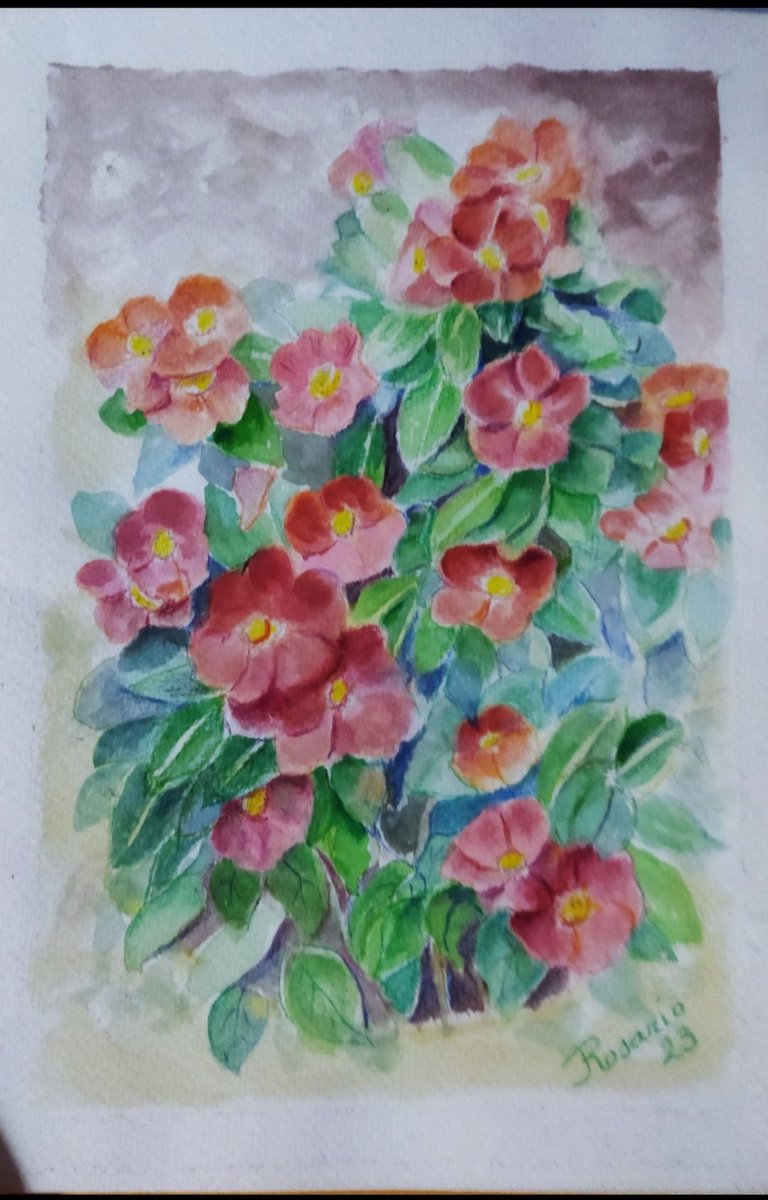
Gracias por tu amable lectura
Mi contenido es original
Las imágenes me pertenecen
He usado la aplicación de edición de imágenes Canva.com
He utilizado el traductor DeepL.

Art has many definitions, for me it is a process to recreate reality, to try to imitate it, to give it a new form, and to preserve it in time.

They say that beauty is in the eye of the beholder and that is also true, from my point of view, admiring nature and appreciating every color, every detail is something I like; that's why since I became interested in painting I have tried to copy leaves, flowers and landscapes as a form of recreation.
I really like watercolor because of the precision that must be taken when placing the layers and because the water with the pigment establishes a relationship that does not end, the stain continues to speak even after some time has passed.
I'm still an apprentice, I'm still searching in this technique to improve a little bit every day. In this opportunity I want to make the tutorial of how I elaborated this painting of Vincas or Good Afternoon from the following image.
Materials:
. Soft watercolor brushes
. Watercolor paint .
. Watercolor crayons
. Graphite pencil for sketching .
. Special 300 base paper for watercolor
. Distilled water
. Palette for mixing colors
. A tissue or toilet paper
. One or two containers to wet the brushes.
brushes .
. Tirro

Steps
1
The first thing to do is to place a piece of paper on the edges of the paper to leave a white margin of approximately one or one and a half centimeters.

2
Then we proceed to make the drawing, with graphite pencil, on the paper. In painting, the most important thing is the drawing, which should be as exact as possible to our selected image, in this case it was a photograph of a plant called Vinca, also called Buenas Tardes.

3
Then, I cut out small tyro shapes to place in some places where I wanted to leave some lights and in the center of each flower. There are also some products that allow you to do that, to protect the whites, which are formed with the same paper, that is, the white color is not used but the absence of paint on the paper leaves the white visible.

It is convenient to place the softest colors first, layer after layer. If we place the strong color the first time, we ruin the work.
Doing this type of painting is very relaxing, so it is necessary to have everything at hand. Brushes should be cleaned very well and dried carefully before using a new color so that the design does not get stained.
4
Once one layer is dry we place the other one. In this drawing I worked wet on dry. You can also do it wet on wet and the paints integrate and give a very interesting effect. But I preferred, in this opportunity, to let it dry first.

5
In painting, the color blue helps us to show what is behind, and to create contrast, that is why some leaves present these colors.

At the end, with watercolor colors, with a very fine tip, I made the details, that is, the veins of the leaves, not all of them, to allow some of them to look more distant.
6
And this is the final result, after removing the border and the scattered pieces in the drawing.

Thank you for your kind reading
My content is original
The images belong to me
I have used the image editing application Canva.com
I used the translator DeepL.

Siempre he sido fan de las pinturas en acuarela y me parece que tienes mucho talento para ello. Te quedó precioso
Muchas gracias.
@charjaim me encanto ver como trabajaste las sombras en cada hoja de las flores, la combinación de verdes es espectacular. Tienes un talen hermoso amiga y gracias por compartir tu arte con nosotros!😘
Apreciado su comentario. Seguiré creando. Gracias.
Estupenda pintura en acuarela es un gran talento
Gracias, amiga.
@charjaim te quedó muy bonito, las vincas siempre son motivo de inspiración. Felicidades,👏🏼👏🏼
Sí, tienen flores siempre, son muy hermosas. Gracias.
Beautiful watercolor work, the flowers were very nice with respect to the nice reference you gave. Your design turned out very well. Excellent step by step. Thank you for presenting your work in our community @charjaim :) // Bello trabajo con acuarelas las flores quedaron muy lindas con respecto a la bonita referencia que diste. Quedo muy bien tu diseño. Excelente paso a paso. Gracias por presentar tu trabajo en nuestra comunidad @charjaim : )
Muchas gracias a ustedes por la aceptación de mi trabajo. Saludos cordiales.